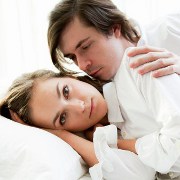Overactive bladder (OAB) is a condition that has you running to the bathroom often. Very often. And for some, even that is not enough. For some, it is not unusual to leak urine between bathroom breaks (urge incontinence).
Many women with this problem don't talk about it, out of embarrassment. But they are in good company. Thirty-three million adults in the U.S. are living with this condition.
If you have an overactive bladder, you'll feel a powerful urge to go. You'll feel it eight or more times a day, and wake up a couple of times through the night to go again (nocturia). You may also end up having an accident due to urge incontinence.
Here's what's going on. The bladder contracts involuntarily. That means it happens without you deciding to do it. It happens on its own.
The urge to urinate is triggered by this contraction. If the urinary sphincter (drawstring muscle) does not stay closed, the urine begins to flow.
It's a good idea to see a doctor to look into the possibility of other health problems. Some conditions your doctor might look for are bladder stones or tumors, diabetes, inflammation, kidney disorders and urinary tract infections. Even too much alcohol or caffiene can cause similar symptoms.
To manage OAB symptoms there are some things to try. Ration your fluids. You might try drinking small amounts throughout the day. And don't drink anything within two hours of bedtime.
Your pelvic floor muscles can give you greater control of when you go. There are simple techniques like Kegel exercises that can strengthen your pelvic floor muscles.
Bladder retraining might be worth a try. Basically this involves scheduling urination, with the goal of re-programming your bladder. You'll try to go according to schedule and try to delay in between scheduled bathroom breaks.
Determine if there are foods that may be causing overactive bladder. Start out by investigating some of these foods and beverages.
Alcohol, artificial sweeteners, caffeine, citrus, soft drinks, spicy food, and foods that are tomato-based, can all cause irritation to your bladder and may lead to overactive bladder.
Also, increasing water consumption while decreasing other liquids can help lessen irritation to the bladder.
Any of these treatments may be very slow in showing results. But try not to become discouraged, and remember that, with 33 million other Americans out there dealing with overactive bladder, you are certainly not alone.
Resources:
Overactive Bladder Health Channel
http://www.healthline.com/channel/overactive-bladder.html
What is OAB?
http://www.overactivebladder.com/overactive-bladder.aspx
Mayo Clinic: Overactive Bladder
http://www.mayoclinic.com/health/overactive-bladder/DS00827
Treatment Options for Overactive Bladder
http://www.medtronic.com/your-health/overactive-bladder/treatment
Interstitial Cystitis (Bladder Inflammation)
http://sclero.org/medical/symptoms/associated/interstitial-cystitis/a-to-z.html
Visit Jody's website and blog at http://www.ncubator.ca and http://ncubator.ca/blogger



Add a Comment1 Comments
I found a program at www.hab-it.com that helped me tremendously with my urge incontinence!
April 29, 2010 - 11:47amThis Comment